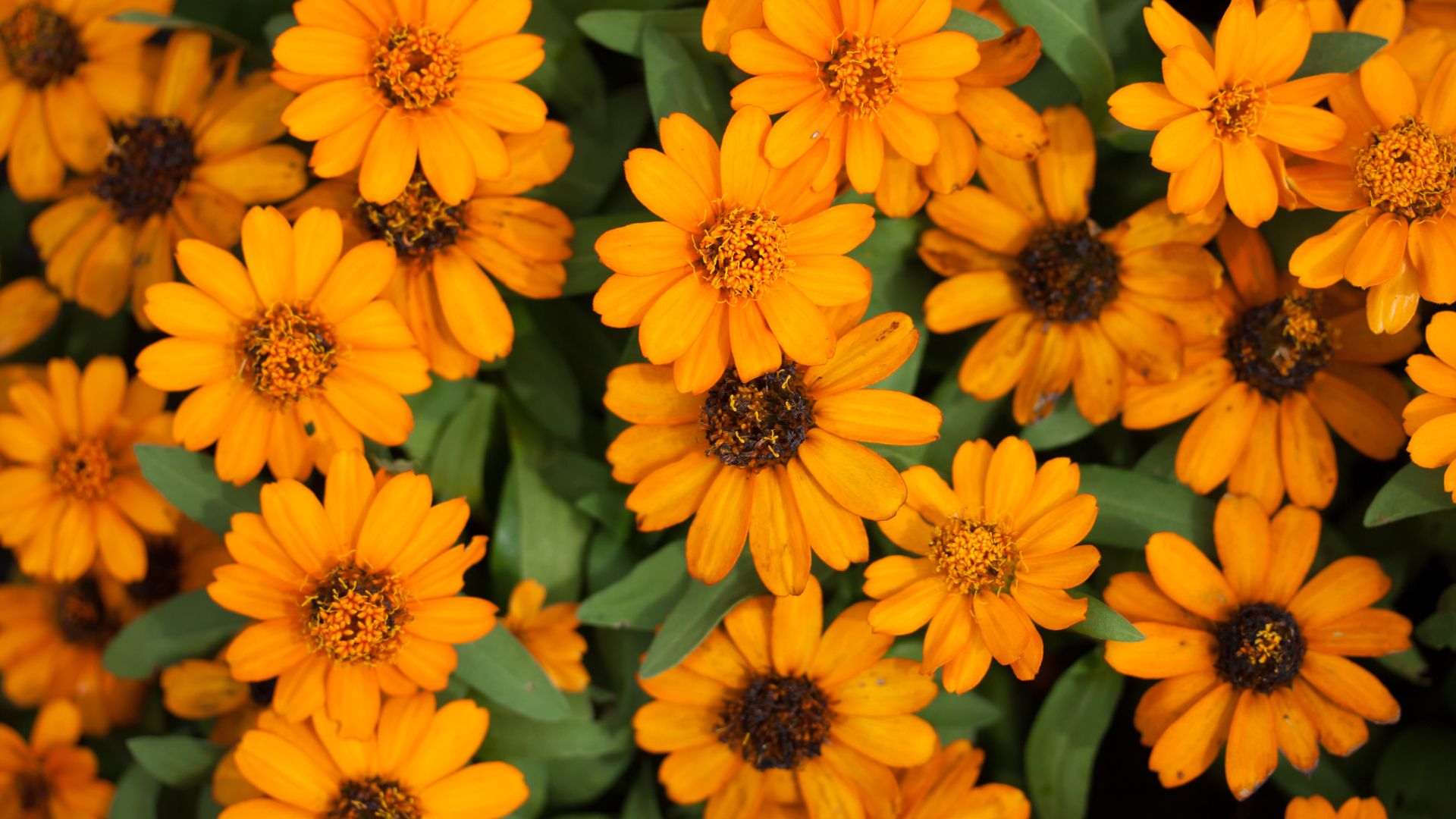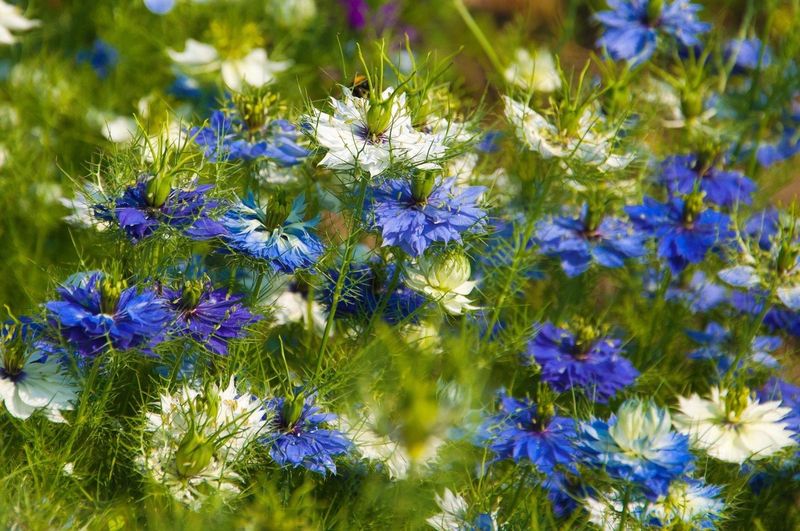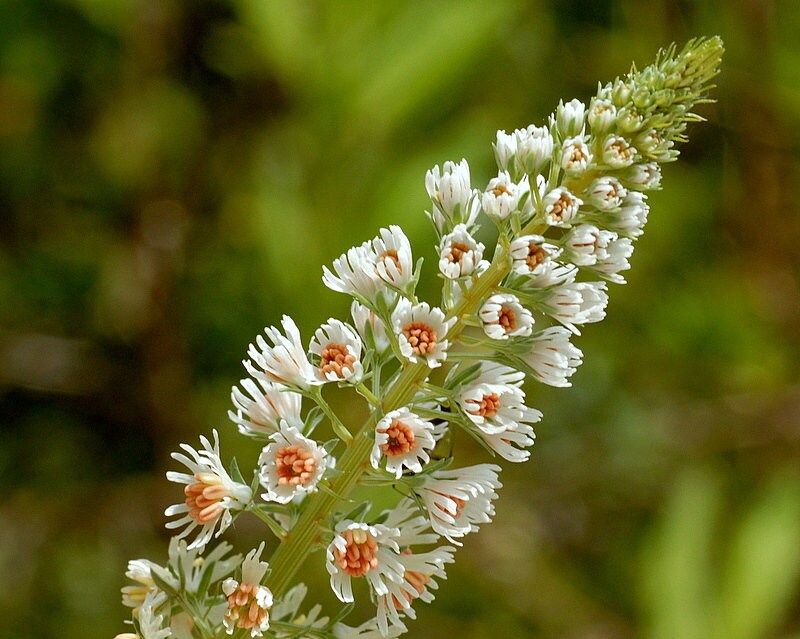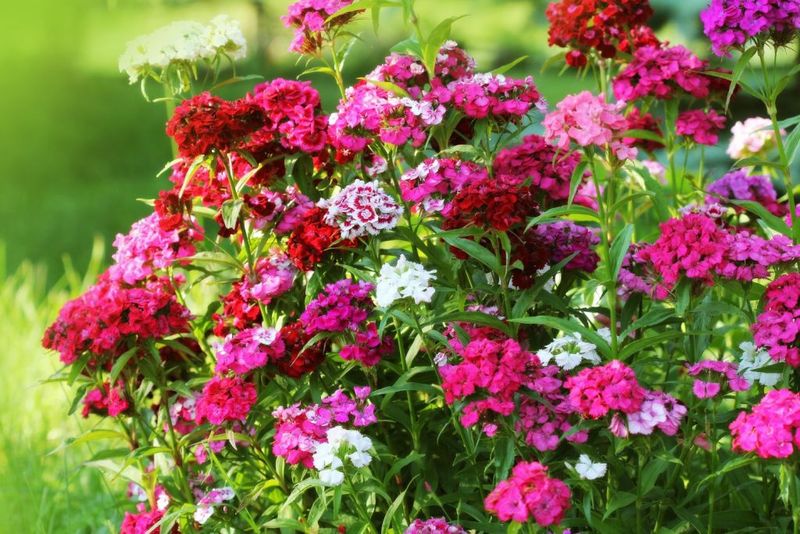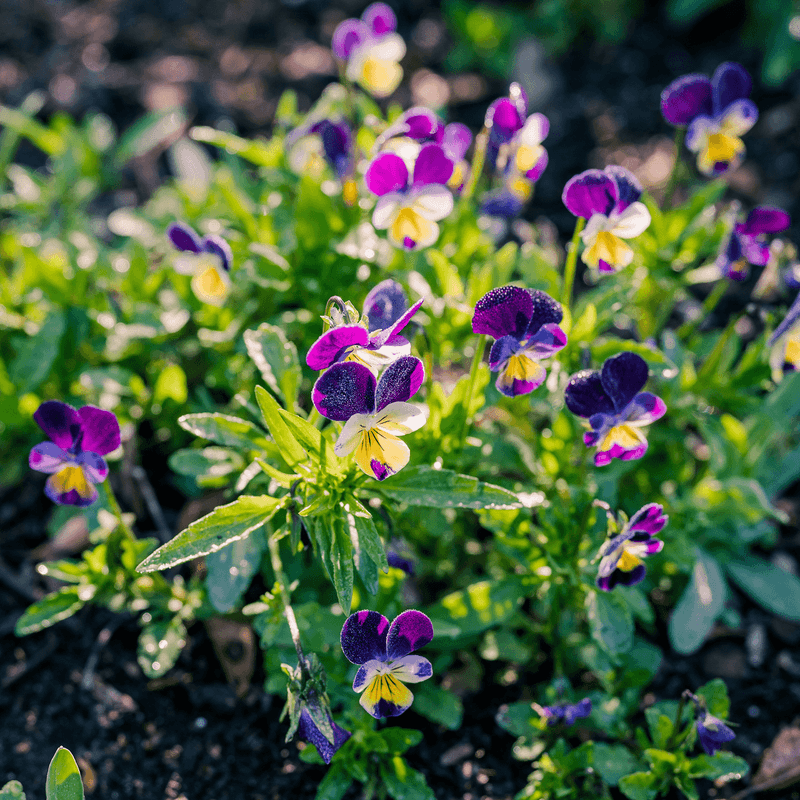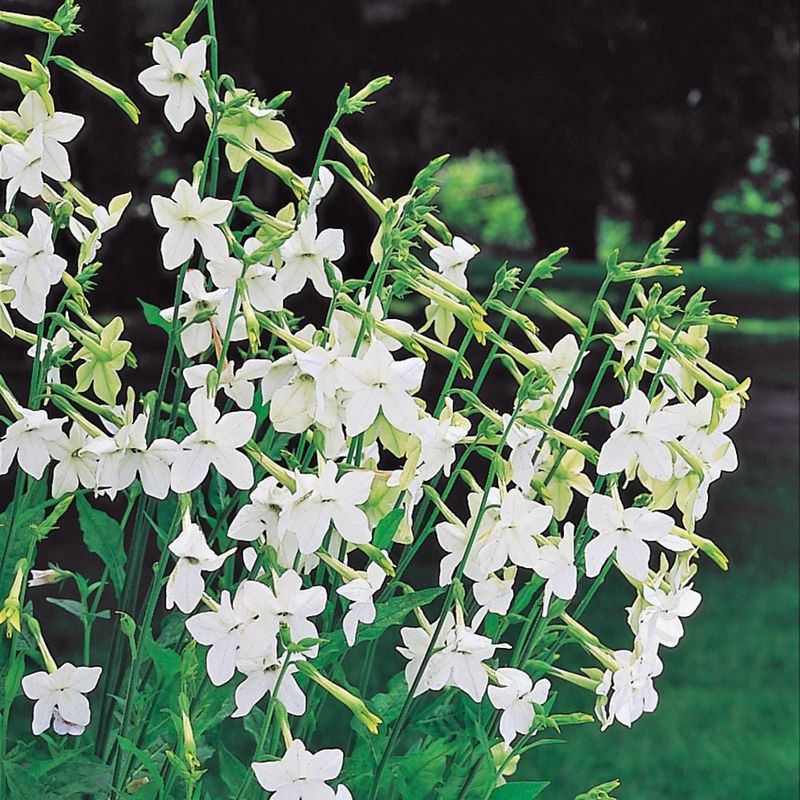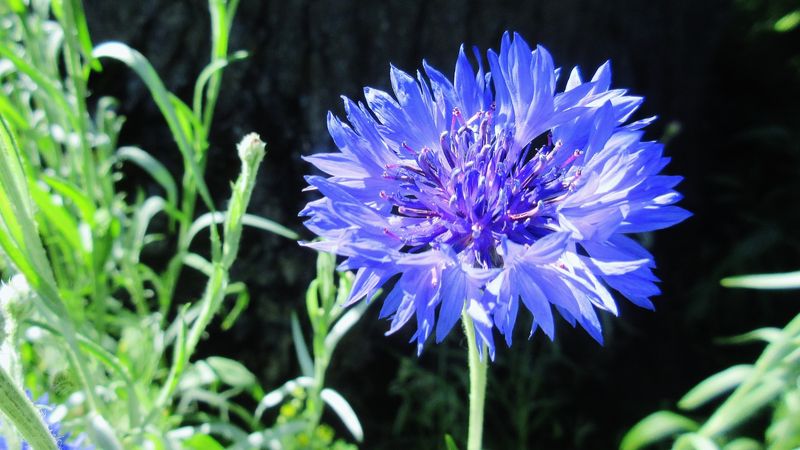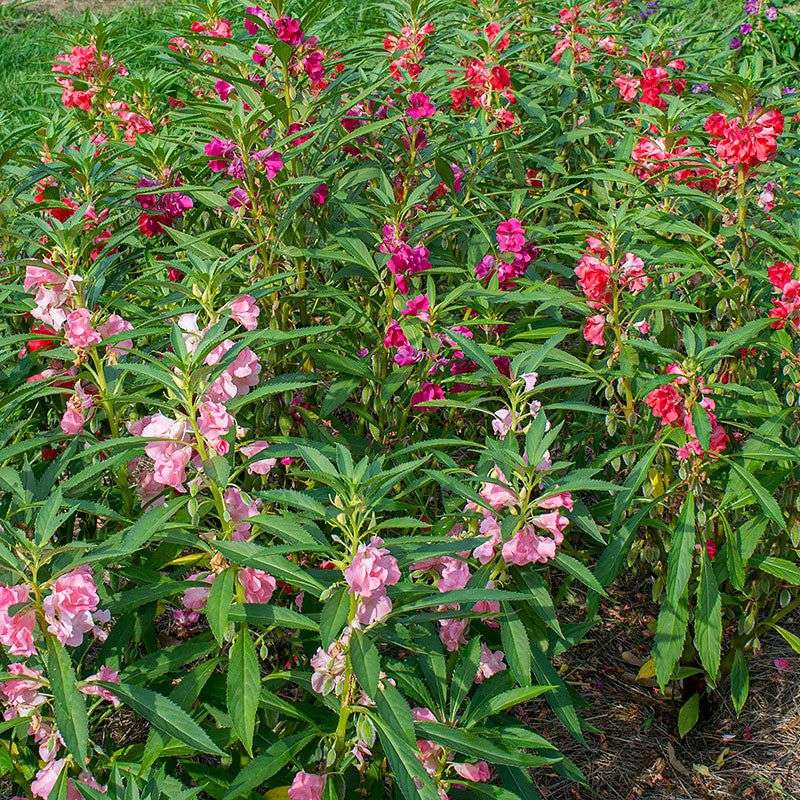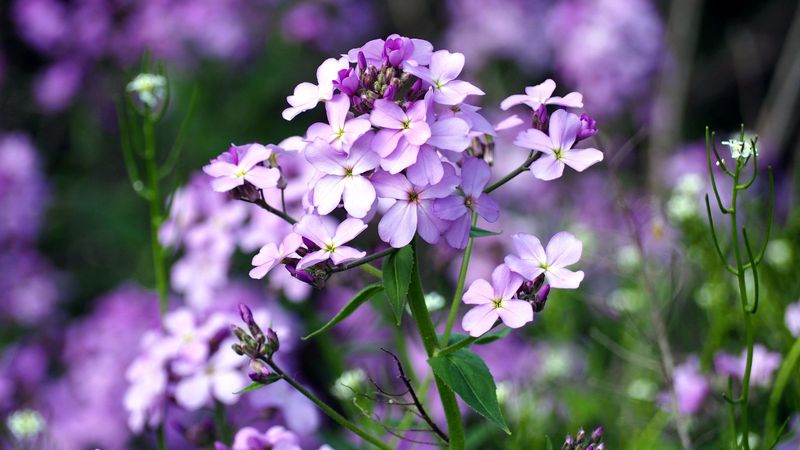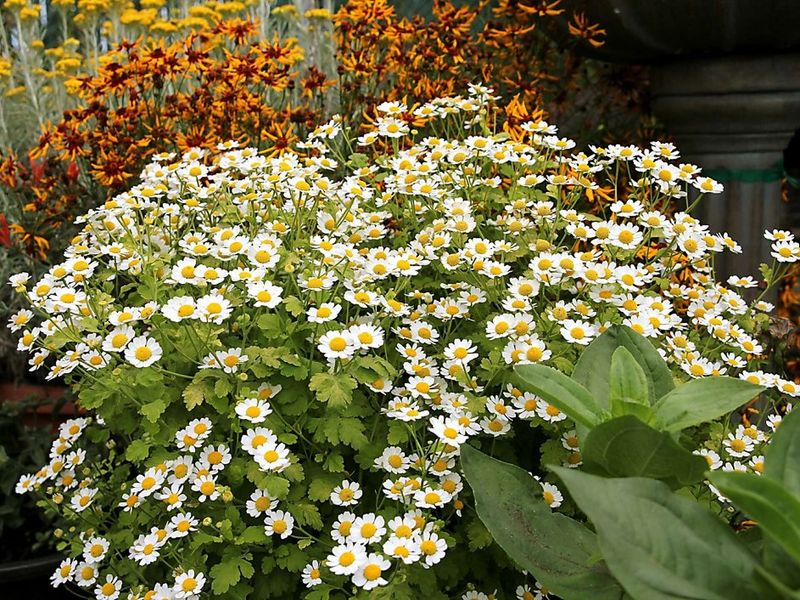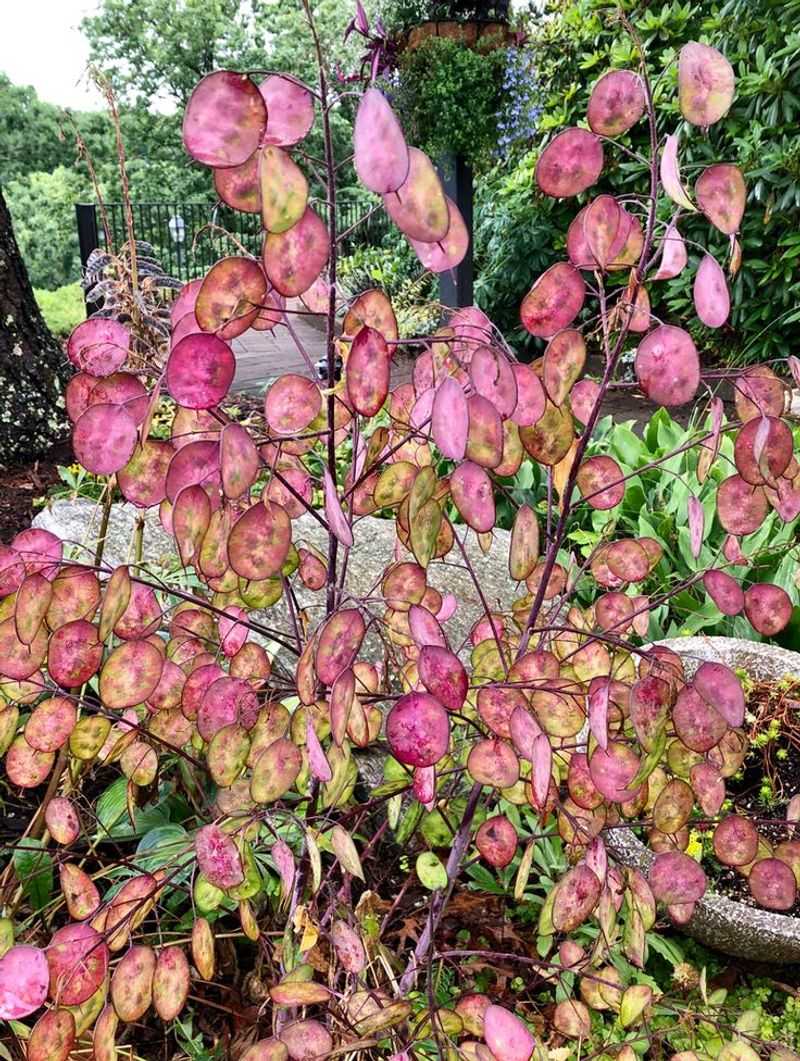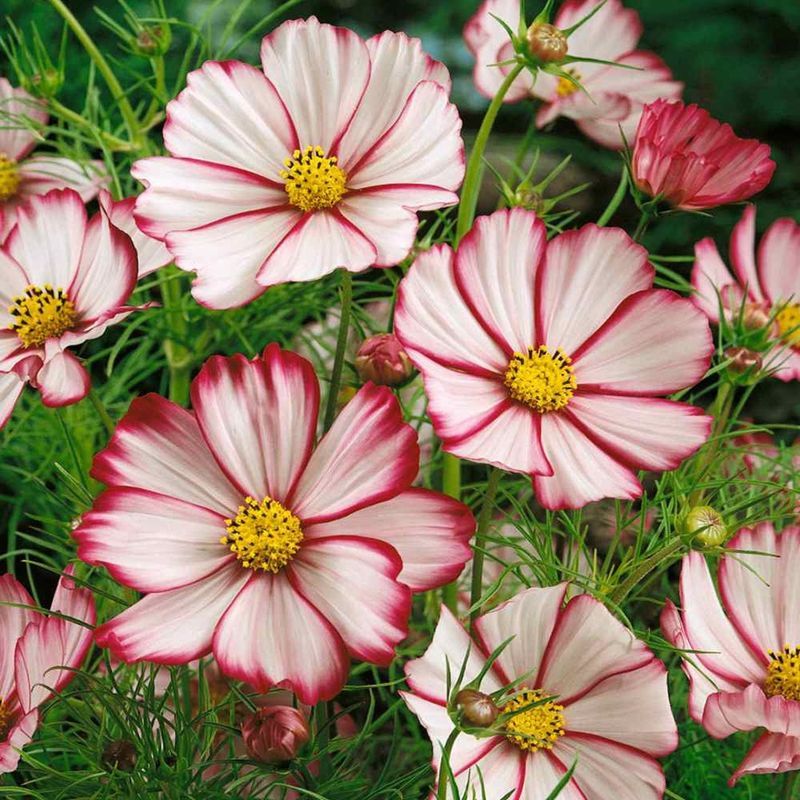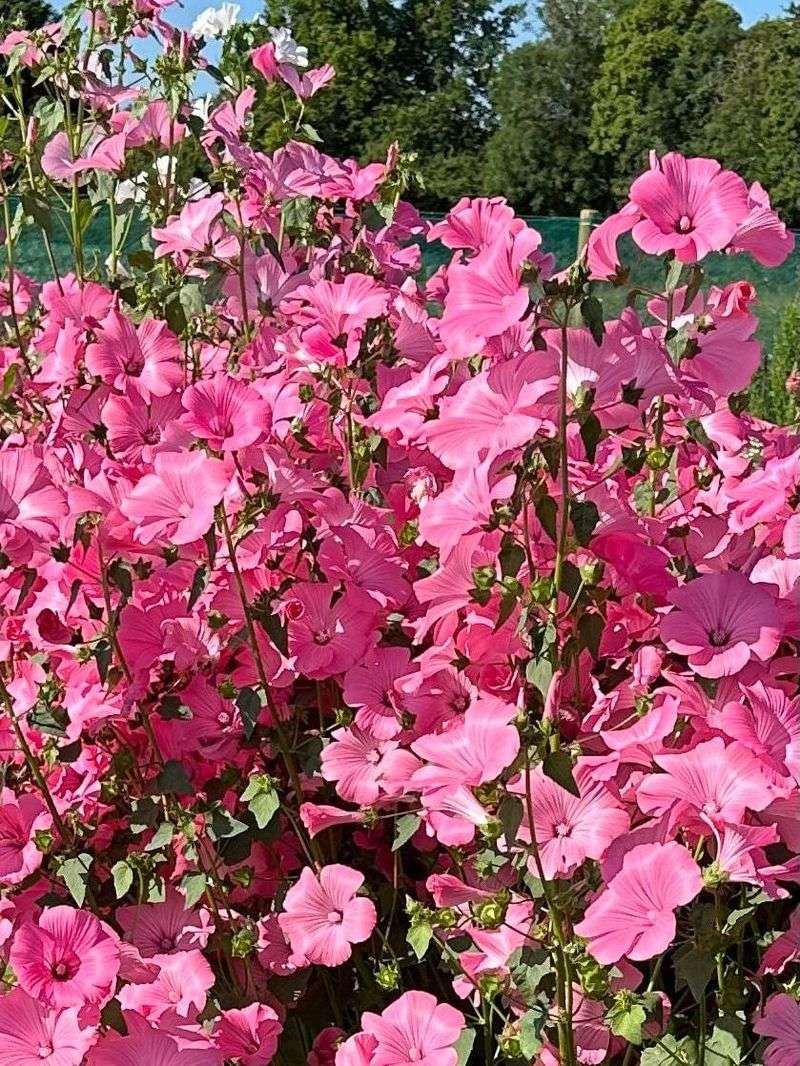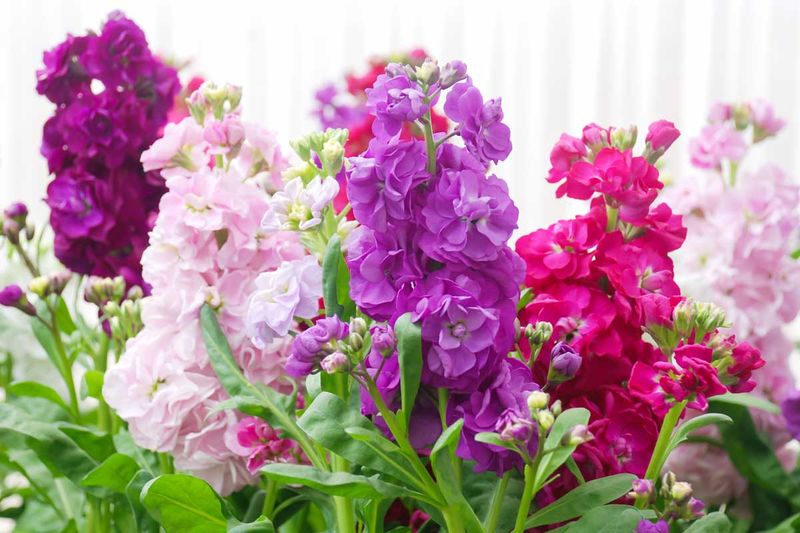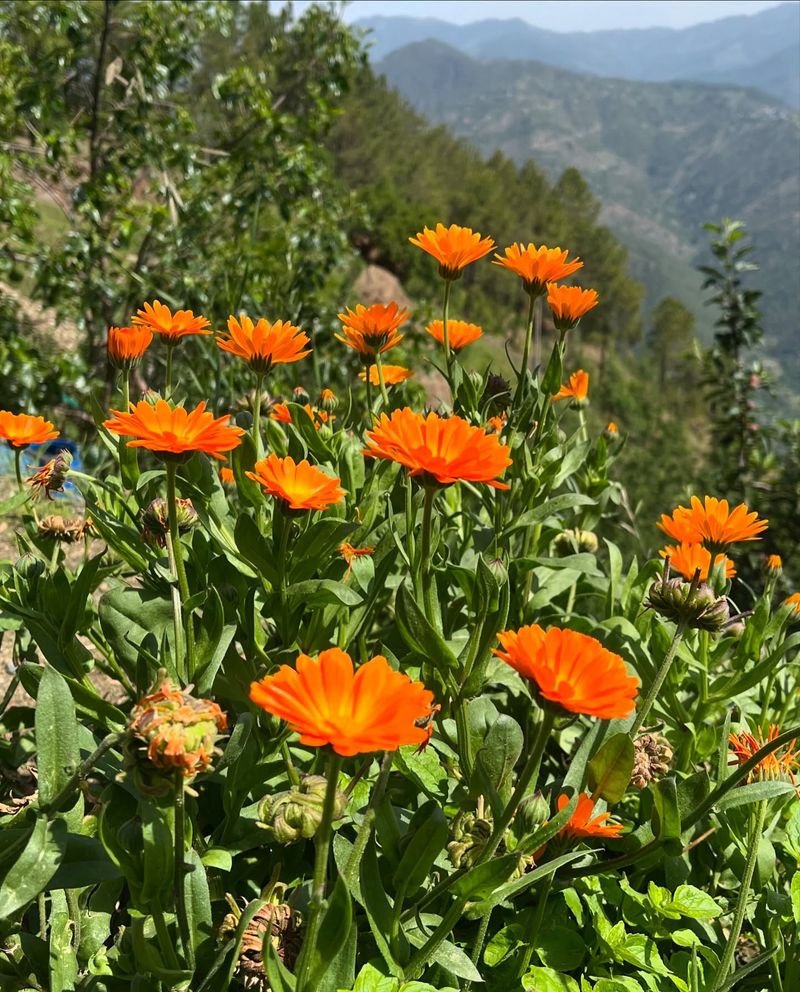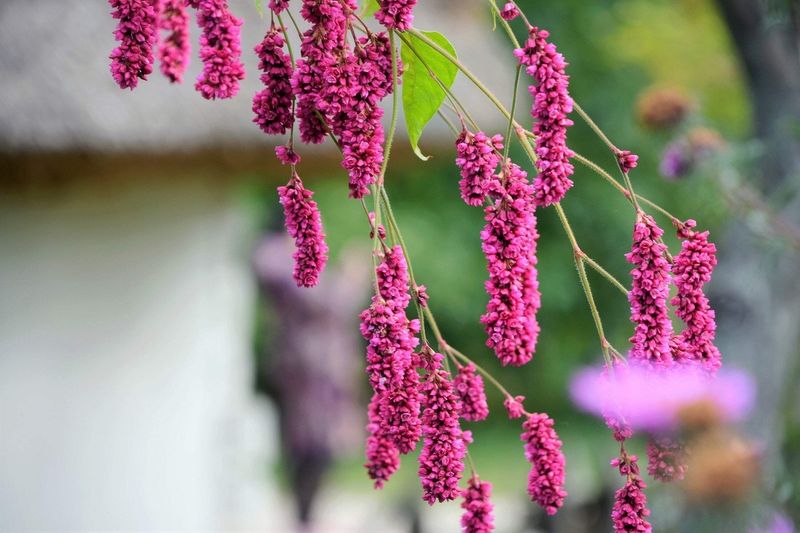Remember walking through your grandparents’ garden and seeing those cheerful, familiar flowers that seemed to pop up in every corner? I still remember the scent of sweet peas climbing the fence and the way hollyhocks lined the back of the shed like colorful soldiers.
Those gardens had a charm that felt effortless and full of memory. Over time, gardening trends have shifted—sleek landscaping, exotic imports, and minimalist beds have taken over. Somewhere along the way, we lost touch with many of the blooms that once defined our family yards. I didn’t even realize some were missing until I saw an old photo and felt that pang of recognition.
Let’s take a stroll down memory lane and revisit 18 beautiful flowers that were once staples in home gardens but have quietly faded from popularity. You might even feel inspired to bring a few back.
1. Four O’Clocks
Grandma’s garden timer is what we called these fragrant beauties that open like clockwork each afternoon. The trumpet-shaped blooms release a sweet perfume that used to draw children outdoors as the day cooled.
Once a staple in informal cottage gardens, Four O’Clocks fell out of fashion when low-maintenance perennials became the trend. Their tendency to self-seed generously made them seem too unruly for modern landscaping sensibilities.
My great-aunt used to plant these along her walkway, creating a fragrant evening welcome for visitors. They’re actually making a small comeback among gardeners seeking drought-tolerant, night-scented plants with that nostalgic charm.
2. Love-In-A-Mist
Delicate blue stars floating in a cloud of feathery foliage earned this flower its romantic name. Victorian gardeners couldn’t get enough of these ethereal blooms that seemed to dance above the garden like morning mist.
After flowering, the seed pods develop into fascinating balloon-like structures that dried beautifully for arrangements. The decline of cutting gardens and rise of bold, low-maintenance landscapes pushed these subtle beauties aside.
Growing up, we collected the dried seed pods for winter decorations, preserving a bit of summer magic. The intricate flowers require almost no care, making them perfect candidates for revival in today’s cottage garden resurgence.
3. Mignonette
Appearances can be deceiving with this humble-looking plant that once held pride of place in gardens for its incredible fragrance alone. The modest greenish-white flower spikes won’t win beauty contests, but their honey-almond scent made them Victorian favorites for bedside bouquets.
As gardens became more about visual impact than sensory experience, Mignonette quietly disappeared from seed catalogs and garden centers. Modern hybridizing focused on showier blooms rather than preserving heritage scents.
My grandmother planted Mignonette beneath her bedroom window, where summer breezes would carry the sweet perfume indoors at night. Finding seeds today requires some detective work, but the reward is a fragrance experience that connects us directly to gardeners from centuries past.
4. Sweet William
Clusters of fringed petals in rich reds, pinks, and whites once adorned nearly every front yard in America. These biennial beauties earned their place through reliability, long-lasting blooms, and a spicy-sweet clove fragrance that’s unmistakable.
The rise of instant-gratification gardening pushed these traditional favorites aside. Modern gardeners became reluctant to wait the full season required for Sweet William to develop from seed to flower.
The neighborhood where I grew up had Sweet William growing along nearly every fence line, creating a patchwork of color visible from blocks away. Though less common now, these sturdy flowers still deserve a spot in gardens where their old-fashioned charm connects us to simpler times.
5. Johnny-Jump-Ups
Tiny faces with velvet textures in purple, yellow, and white seemed to appear overnight in spring gardens, hence their playful name. These diminutive relatives of pansies charmed generations with their cheerful appearance and surprising resilience through late frosts.
Commercial growers developed ever-larger pansies and violas, making these small originals seem less impressive by comparison. Garden centers gradually stopped carrying them in favor of their showier, bigger-bloomed cousins.
The first flowers I successfully grew as a child were Johnny-Jump-Ups, their friendly faces popping up in unexpected places each spring. They’re perfect for children’s gardens, teaching patience as they self-seed and creating moments of discovery when new plants appear in surprising spots.
6. Canterbury Bells
Stately spires covered with bell-shaped blooms in shades of blue, pink, and white once announced summer’s arrival in traditional gardens. These biennial beauties stood like floral church towers, creating vertical interest before modern garden design made that a deliberate focus.
The two-year wait from seed to flower made Canterbury Bells victims of our increasingly impatient gardening culture. When garden centers began focusing on plants that performed immediately, these old-fashioned favorites disappeared from inventory.
My grandmother’s photo albums always included at least one picture of her standing beside Canterbury Bells that towered above her knees. Their architectural quality and nostalgic charm make them worth the wait, connecting modern gardens to centuries of traditional European cottage garden design.
7. Nicotiana
Evening gardens once came alive with the intoxicating scent of flowering tobacco plants, their star-shaped white blooms glowing in the twilight. Grandmothers strategically planted these night-performers near porches where families gathered after dinner to enjoy the perfumed air.
Modern hybridization created colorful daytime-flowering varieties but sacrificed the legendary fragrance in the process. As outdoor evening entertainment shifted from porches to television rooms, the appeal of night-scented gardens waned.
Watching those white trumpets unfurl at dusk was magical during childhood summer visits to my great-aunt’s farm. The original fragrant white varieties are making a comeback among gardeners creating moon gardens – white-flowered spaces designed specifically for evening enjoyment.
8. Bachelor’s Buttons
Cornflower blue blossoms with their distinctive fringed petals were once countryside staples, both in cultivated gardens and growing wild along roadsides. Young men traditionally wore these flowers in their buttonholes, giving rise to their romantic common name.
The shift toward more exotic garden colors and complex flower forms pushed these simple beauties out of fashion. Their meadow origins made them seem too common or informal for increasingly designed landscape plans.
Every summer, my grandfather would tuck a blue Bachelor’s Button into his shirt pocket before Sunday drives. These drought-tolerant flowers are finding renewed appreciation among pollinator gardeners and those seeking easy-care annuals with heritage appeal and excellent cutting qualities.
9. Balsam
Victorian children delighted in these colorful flowers that produced seed pods that popped when touched, earning them the nickname “Touch-Me-Nots.” The camellia-like blooms nestled among glossy leaves on plants that required almost no care beyond occasional watering.
Despite their easy nature, Balsam flowers lost ground to more exotic-looking annuals. Their old-fashioned charm seemed less appealing as tropical-inspired garden trends took hold in the latter half of the 20th century.
Summer afternoons in my childhood often included collecting the ripe seed pods in paper bags, then delighting in the popping sounds they made. These charming plants deserve rediscovery for children’s gardens, where their interactive nature creates memorable gardening experiences.
10. Dame’s Rocket
Fragrant clusters of four-petaled flowers in shades of purple, pink and white once graced early summer gardens with both beauty and perfume. Evening walks through grandmother’s garden were accompanied by their sweet scent, which intensifies after sunset.
Often mistaken for garden phlox, Dame’s Rocket fell from favor partly due to its enthusiastic self-seeding habit. In some regions, it’s now considered invasive, though gardeners of previous generations valued its carefree nature.
The wildflower meadow behind my childhood home was dotted with these flowers that seemed to appear by magic each May. For controlled gardens, the sterile cultivated varieties offer the nostalgic beauty without the spreading tendency that worried modern landscape designers.
11. Feverfew
Tiny daisy-like blooms covering bushy plants once served double duty in gardens – providing cheerful flowers while also functioning as a medicinal herb. Grandmother’s generation knew these as remedies for headaches and fever, hence the practical name.
As modern medicine replaced herbal remedies and garden styles became more dramatic, these modest bloomers fell out of fashion. Their small flowers couldn’t compete with the showier daisies developed by commercial breeders.
My grandmother dried bunches of feverfew in her kitchen, using them for both decoration and headache tea. The plants are making a quiet comeback in herb gardens and cottage-style landscapes where their continuous blooming habit and historical significance are once again appreciated.
12. Honesty (Money Plant)
Gardeners of yesteryear treasured these plants less for their modest purple spring flowers than for the papery, translucent seed pods that followed. These silver dollar-shaped discs caught sunlight like stained glass in the garden before being harvested for winter decorations.
The biennial growth habit requiring patience for results fell out of sync with modern gardening trends. As dried flower arrangements gave way to artificial alternatives, the practical reason for growing Honesty diminished.
Visiting my great-grandmother’s farmhouse meant admiring the dried seed pod arrangements that lasted for years in her front parlor. The plant is experiencing a small revival among crafters and those seeking sustainable, garden-grown holiday decorations with vintage appeal.
13. Cosmos ‘Sensation’
Tall, airy stems topped with simple daisy-like flowers in shades of pink, white, and deep rose created movement and grace in grandmother’s cutting gardens. The original tall varieties reached heights of 4-5 feet, dancing above other flowers in the summer breeze.
Modern breeding focused on creating compact varieties suitable for containers and small spaces. The magnificent height of the heritage varieties became seen as a liability rather than an asset in shrinking urban gardens.
Summer evenings at my grandparents’ farm always featured dinner tables adorned with these graceful blooms. The original tall varieties are perfect for back borders in modern gardens, creating that nostalgic sense of abundance while attracting butterflies and providing excellent cutting flowers.
14. Lavatera (Tree Mallow)
Abundant pink flowers resembling small hollyhocks covered these shrubby plants from early summer until frost. Grandmothers appreciated their reliable performance and the way they filled garden corners with continuous color without demanding constant attention.
The rising popularity of woody shrubs with multiple seasons of interest pushed these summer-bloomers out of fashion. Their single-season performance seemed insufficient as garden spaces became smaller and expectations grew larger.
My first garden memory involves helping my mother cut armloads of these flowers for summer parties. Today’s gardeners seeking pollinator-friendly plants are rediscovering Lavatera for its nectar-rich blooms, easy care, and the nostalgic cottage garden atmosphere it creates with minimal effort.
15. Annual Poppies
Paper-thin petals in brilliant scarlet, salmon, or white danced above blue-green foliage in almost every garden decades ago. The ephemeral blooms lasted just days, but plants produced them in such abundance that gardens seemed aflame with color for weeks.
The shift toward long-blooming perennials and instant-impact landscaping left little room for these short-lived but spectacular performers. Their tendency to self-seed freely also conflicted with more controlled modern garden designs.
Watching poppy buds unfurl in early morning light was a special childhood memory in my grandfather’s garden. These easy-from-seed flowers are finding new fans among gardeners seeking quick, inexpensive ways to fill spaces with dramatic color and create self-sustaining plantings with minimal effort.
16. Stocks
Evening gardens once filled with the rich clove perfume of these spire-forming flowers in shades of pink, purple, white, and cream. Victorian gardeners prized them for their intoxicating fragrance that intensified at twilight, making evening garden strolls an aromatic pleasure.
As gardens became more about visual impact than sensory experience, these somewhat plain-looking flowers lost popularity. Their shorter blooming season couldn’t compete with newer varieties bred for longevity rather than scent.
My grandmother always placed a vase of stocks on her bedside table, filling her room with perfume as she slept. Modern cottage gardeners are rediscovering these heritage flowers, particularly in moon gardens designed for evening enjoyment where their powerful fragrance creates an immersive garden experience.
17. Calendula
Sunny orange and yellow blooms with medicinal properties brightened vegetable gardens and cottage borders throughout history. Often called Pot Marigold, these edible flowers served dual purposes – adding color while providing petals for cooking and healing salves.
The rise of purely ornamental gardening separated flowers from vegetables, leaving these practical bloomers without a clear place in modern landscape design. Their medicinal uses became curiosities rather than necessities.
My grandmother’s garden journal contained pressed calendula petals and recipes for healing creams she made each summer. These heritage flowers are experiencing renewed interest as edible gardening trends reconnect us with the practical beauty our ancestors valued in plants that served multiple purposes.
18. Kiss-Me-Over-The-Garden-Gate
Whimsical chains of pink flowers dangled from impressive 6-8 foot stems, creating a romantic bower effect that earned this heirloom its charming name. Victorian gardens featured these dramatic annuals as conversation pieces and natural dividers between garden rooms.
The impressive height that once made these flowers special became impractical for shrinking modern gardens. Their size and somewhat ungainly growth habit didn’t fit neatly into contemporary landscape designs focused on compact, controlled plantings.
Summer visits to my great-aunt’s farm always included hiding beneath the drooping pink chains of these gentle giants. For gardeners with space, these conversation-starting flowers create instant nostalgia and vertical interest while attracting beneficial insects with minimal care beyond initial staking.

